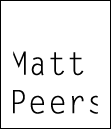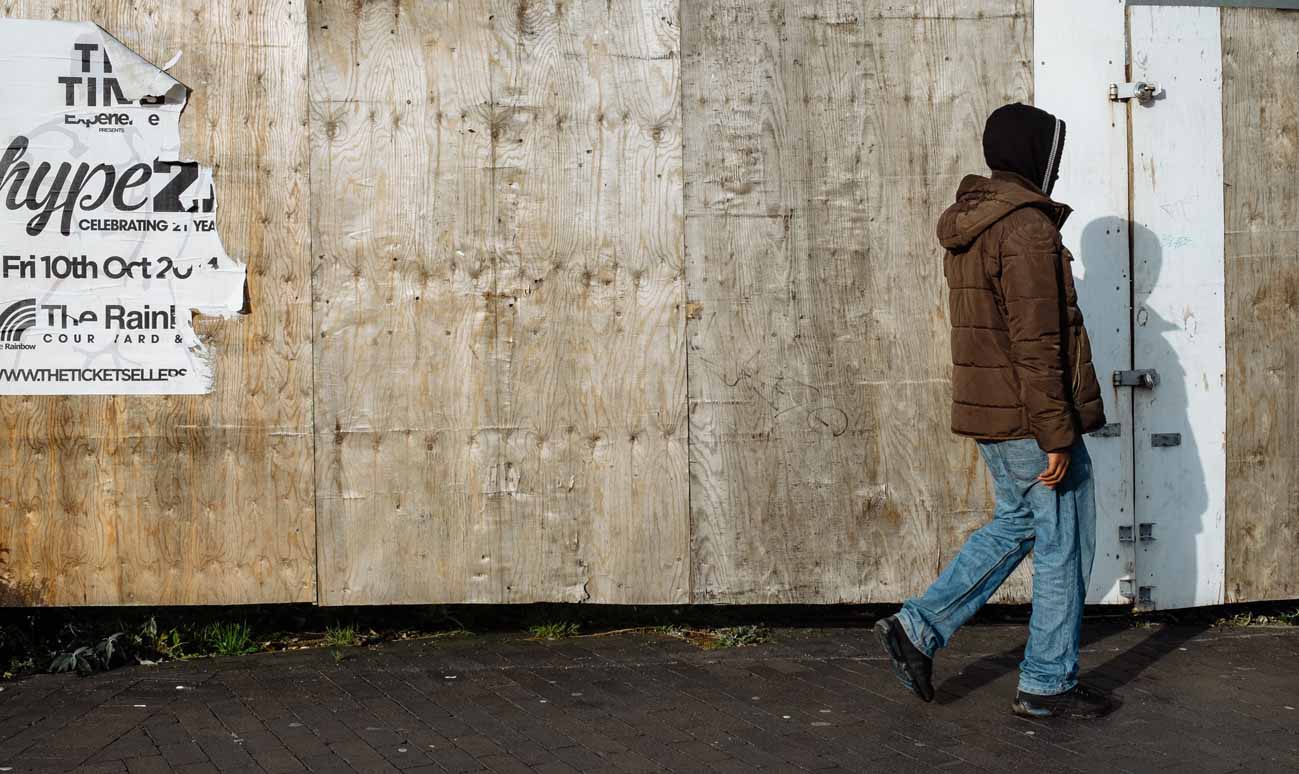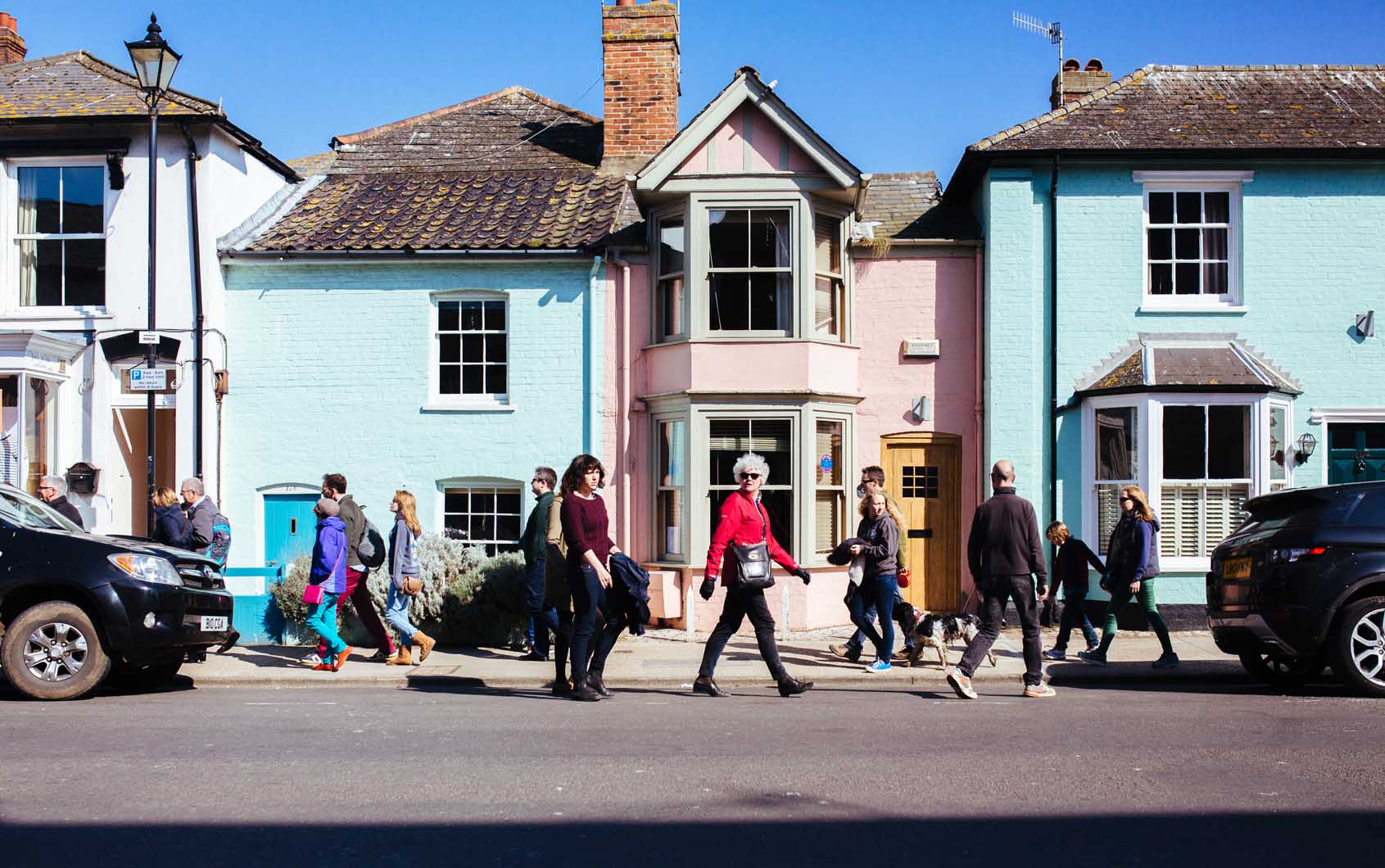To paraphrase the great David Bailey, we all have a truly great image in us, but the difference with him is he will have many, many more. It is rare to get as many great images in one life time as Bailey, but we can aim for more than just the one.
Read Morestreet portraits
#1 of 5
5 in 5
I've avoided reviewing equipment or books, but recently I was reminded of the ideas, exercises and ways of thinking in the book, The Photographer's Playbook. It's a great book to get you thinking about the creative process of image making, rather than focusing on the how to, instruction type stuff. Anyway, on this particular occasion , I was drawn to a particular corner and patch of light in the city centre, but only had 5 minutes of spare time.
#2 of 5
Sometimes I have the luxury to spend hours, days or even weeks in a location to build a collection of images. Doing commercial and family portraiture you can easily take 100s of images to later whittle down to a small polished final collection. What though should you expect to get in 5 minutes from one street corner? Could I get 5 'keepers' in such a short time? As I started shooting I became far more focused and direct about what I wanted - so much so I started directing people " Could you just walk there? The light is fabulous that side...thanks".
#3 of 5
Overall people were very accommodating (or maybe slightly concerned about the manic look in my eye) and were willing to help out. Maybe working to tight schedules is the way forward as, overall, I'm quite pleased with how my 5 in 5 turned out.
#4 of 5
Till next time...
Matt Peers
Behind the image #8
It's my second visit to the hospital that day and to be honest I was glad of the distraction. Over the years I've had lots of " I've been left stranded, no way of getting home, I will pay you back as soon as..." requests for money, and to be honest I usually dismiss them. This time though, I let the disjointed and inconsistent story wash over me and offer the change I had - £3 - in exchange for a portrait. I'm sure he didn't realise how intimidating he looked when not speaking as he was actually quite softly spoken. Touchingly, when he said goodbye, he thanked me for being interested enough to take a picture and not for the £3.
Till next time...
Matt Peers
Standing allowed...this much I know.
I think it is fair to say that I am not going to achieve a level of fame where the weekend paper life style sections want a pithy one page interview with me and thoughts on photography. But if they did, it would be something like this...
Treat photographers like musicians
In other words, get to know their genre, current and back catalogue. It's not only enjoyable, it actually starts to feed in to and improve your own images. To get started, go through the Magnum photographers' galleries and feast your soul there. Alternatively, you could enjoy the images of musicians taken by John Morgan
Image courtesy of John Morgan
The web is great, but the printed page is better
The majority of the images you look at will be on some sort of screen, which is understandable. A book however, gives you a tactile, closer relationship with the images the screen just can't match. A real beauty is the recent Martin Parr compendium if you want to put it to the test.
Better still, buy the book after visiting the exhibition
It's like going to see them live and listening to the CD later.
Or in this case just visit the exhibition...
Ditch the zoom and get a fixed prime lens
I've spent so much time and money expanding my optical options only to come full circle and realise for street and portraiture work, I only need one lens - a 35mm prime. If I need to get closer or further away I now move my feet.
Two very different images but both taken with the same 35mm prime lens
Try and do something everyday
To improve in any activity, practice, practice and more practice is required. It's heartening to read books like Matthew Syed's Bounce and Malcolm Gladwell's Outliers argue 10,000hours of practice leads to greatness rather than just innate talent. To practice more I needed to stop thinking photography as an appointment hobby , i.e. weekend after next I'm going out to use my camera, to one where a camera is with me most of the time. For some that might be a smart phone, for me it meant buying another camera small enough to carry but still high in image quality.
Don't get hung up on effects
I've noticed for some people when they get in to photography they aim for techniques such as light trails and slow shutter wire wool burning shots for their wow factor ( I hold my hands up - I was no different). Yes, they can look spectacular, but after a while they just become , well, a bit boring really.
Edit carefully
Can't tell which one of the 17 near identical images you like the most? Well, don't display them all for us to decide. Hard as it might be choose just the one, as for every near identical image you add the original impact decreases dramatically.
A forced smile is like a faked male orgasm...
...its easy to spot and nobody leaves feeling great. An honest expression will always make for a better portrait compared to a forced grin.
Till next time...
Matt Peers
Behind the image #3
It’s early evening on 14th Street and my better half and her sister are enthralled in a marathon shoe shopping session in a shop called Shoegasm ( where yes, at the end of your purchase, they really do say “thank you for coming!”). I wasn’t too bothered as the early evening light was still good and I was happy to see what interesting subjects might come my way. Within moments of deciding to find a good street portrait subject, Candice sashayed down the road with her two friends. Her buoyant curls and performers' confidence made her an ideal subject to photograph - which is something she is quite used to, as little did I know she is an extremely accomplished opera singer ( have a listen at www.candicehoyes.com). After an exchange of emails and edits in both colour and black and white, this is her favourite image.
Till next time...
Matt Peers
Going in close... I wasn't really going to be hit...honestly.
An evening with Bruce ...
....Gilden. A few weeks ago I was lucky to see a talk by the Magnum celebrated street photographer Bruce Gilden. Not only was the event inspirational, it was held in the lovely new Library of Birmingham, through their photographic enterprise GRAIN and cost the unbelievable amount of £3! His work focuses on the people he finds ‘interesting’; many are on the margins of ’normal’ society, and his work is often considered shocking for the in your face confrontational style. Ironically, for a man who has traded blows on the tough streets of New York, taken candid images of real Russian and Japanese gangsters and witnessed voodoo rituals in Haiti, the people that scared him most were the ones he met on the West Bromwich high street!
Did he or did he not play football for West Bromwich Albion in the late 70s? The Secret Footballer by Me and I Photography
What struck me most about his talk was not his desire of the dangerous or the exploitation of the certain members of society, but to talk to people and listen to their stories. In doing so, his images are challenging, thought provoking and at times, down right hilarious.
Walking past a city centre building site presented me with a marvellous portrait opportunity.
Permission was granted before this shot was taken.
There are a growing number of online photographic and sociologic projects such a people of new york and the people of soho , capturing real people and their stories. Now, I can only dream that my efforts one day get close to Mr. Gilden’s work, but I’ll continue to talk to people and hopefully take a good image or two...
The lit advertising board was a great impromptu lighting set up.
In the food Market by the Festival Hall, South Bank, I looked like any other tourist with a camera.
For some reason it's aways easy to get a portrait by the National Portrait Gallery...
His eyes seemed to look straight in to my non religious soul.
Till next time...
Matt Peers
It's certainly not a black and white matter.
Although colour photography is generally considered a default choice, black and white photography has arguably never been equally more in demand and misunderstood. Even though digital practically killed off the Kodak empire, their iconic TRI-X film has just reached its 60th birthday and is still in strong demand. Software and mobile apps can offer a number of different black and white effects, but in too many cases they don’t tell you why the image looks different. Some name the different effects by names such as 'Ansel', 'Tonal' and 'Classic’ but offer no further explanation as to how and why they differ. Many people, to be fair, don't care - black and white is just considered what’s left when the colour has been taken away. And yet, colour plays a massive part in the look and feel of a black and white image. So, using variations of the same image, I'll attempt to make a little sense of those settings and show how differnt colours change the tones and effects within a black and white image.
Fig 1. Colour
Colour: Kodak Portra 400
When looking to see how a colour image will render in black and white note the complexion and background colour tones. In this portrait we have predominantly subtle red and earthy tones.
Fig 2. Standard Monochrome
Black and White: Silver Effex Pro 2 neutral setting
It's a nice immediate black and white conversion, although there's a lack of contrast between her features and the background.
Fig 3. Red Filter
Black and White: Silver Effex Pro 2 neutral setting + red filter 50% value
By adding a red filter it will lighten red or pink areas and darken blue or brown areas. Skin appears lighter and eyes darker. This can be a nice approach for pale complexions as it allows the eyes to really shine.
Fig 4. Green filter
Black and White: Silver Effex Pro 2 neutral setting- Green filter 50% value
A green filter/ mix of film is my preferred starting point for black and white as it has a rich warming effect to skin tones.
Fig 5. Blue filter
Black and White: Silver Effex Pro 2 neutral setting - Blue filter 50% value
If you remember your paint mixing as a child you'll remember blue darkening anything you added it to. In black and white it's no different - it will create deep, dark tones for areas red, green and blue. Eyes will darken as will lips, so be careful how much you add.
Fig 6. Yellow filter
Black and White: Silver Effex Pro 2 neutral setting + yellow filter 50 % value
Similar to the red filter the yellow will lighten red tones and darken blue and green areas. This is another popular filter to present smoother skin and contrast to allow the eyes to draw the viewer's attention.
Fig 7. My Edit
Black and White: Silver Effex Pro 2 Tri X film emulation + adjustments
For this I've tweaked the colour channels based within the Kodak TRI-X film recipe. I've attempted to balance between tone and contrast and the spark of her eyes. If my recent poll on social media is anything to go by, opinion will be divided as to which is preferred.
This of course has only scratched the surface of the differences in black and white photography, but hopefully has answered (and raised) a few questions.
Till next time...
Matt Peers
Do you mind, I am smoking a fag!
A couple of years a go I attended a lecture by the seminal photographer Steve McCurry. He's the one that took the famous picture of the Afghan girl with the 'eyes'. To be honest the lecture was pretty dull - a sort of death by power point and greatest hits mixed together - but he did impart some advice that stuck with me; always have a recurrent theme. His was to photograph people sleeping in public ( whatever floats your boat I suppose...) and mine has ,by accident rather than design, been of people smoking. Rather than enter moral or medical arguments about the habit ( for the record I only smoke when I’m rubbed hard enough...), for me it offers a unique window in to the person and their life.
The broad spectrum of people is fascinating; from the cinematic cool looking youngsters to the older generations displaying its long term effects. The lack of public indoor smoking options means it's a great theme for street photography.
Huddled in shop doorways and shelters, the scenes can have a sense of street theatre to them; some dispossessed, rejected by the non smoking world feel to them, others ganged together, laughing and enjoying their nicotine fuelled time together.
Either way, I’m sticking to Steve McCurry’s advice and carrying on my theme, but avoiding people sleeping in public...for now.
Till next time...
Matt Peers
Tonight Matthew I'm going to be...
My two boys are now at an age where they want to reenact their favourite TV shows and football matches and it is, noise and all, a joy to watch. Whilst in Cornwall for a half term break I was inspired by their play and imagination to emulate the work of one of my favourite photographers, Tony Ray Jones. In the 1960s he returned to the UK from the studying in US and, taking his experience of New York street photography embarked on a project to show the culture, traditions and changes of the people of England. So, when I had a stolen hour on holiday, I decide to just sit, watch the beach tell the stories and pretended to be Tony Ray Jones.
Till next time.
Matt Peers




















OK, it wasn't an exclusive 'hang out with Matt Stuart day' but the next best thing - a Street Photography workshop in conjunction with the Photographers Gallery in London. As postgraduate fees have gone through the roof, I've decided,for now at least, to keep my continual professional development to attending workshops and buying books. And what a valuable day of learning it was!